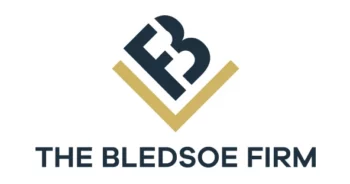Perhaps nothing is more regrettable than the fact that many children are abused by their caregivers or parents. According to federal agencies, an estimated that 686,000 children (9.2 per 1,000) were victims of maltreatment. Of these victims, “78% were victims of neglect; 18% of physical abuse; 9% of sexual abuse; and 11% were victims of other types of maltreatment, including emotional and threatened abuse, parent’s drug/alcohol abuse, or lack of supervision.” (1) Due to additional stressors, it is likely that child abuse during a divorce is more common.
Who is responsible for this terrible epidemic?
According to the same sources, “80.3% of perpetrators were parents, 6.1 percent were relatives other than parents, and 4.2 percent were unmarried partners of parents…54% of perpetrators were women and 45% of perpetrators were men.”(1) Another breakdown of the relationships between child victims and its alleged perpetrators is given in following table:
What is child abuse?
The Child Abuse Prevention and Treatment Act (CAPTA) defines child abuse and neglect as:
Any recent act or failure to act on the part of a parent or caretaker, which results in death, serious physical or emotional harm, sexual abuse, or exploitation, or an act or failure to act which presents an imminent risk of serious harm. (3)
The Do’s and Don’ts of Child Abuse and Divorce:
- DO be aware of the signs your child is being abused and be mindful. Going through the process of divorce can increase how vulnerable children can be to divorce.
- DON’T abuse your children. Learn about the difference between discipline and abuse. If you need help, get help!
- DO use positive parenting strategies where possible instead of physical punishments. Classes are available to learn more about positive parenting.
- DO screen potential babysitters very carefully.
- DON’T quickly introduce your new paramour or partner to your children. It’s also best to avoid leaving your new boyfriend or girfriend alone with your children.
- DO maintain open lines of communication with your children, and an amicable as possible co-parenting relationship with your ex-spouse.
- DON’T make false allegations of child abuse. This is not only incredibly wrong and hurtful to your children, it may cause you to lose custody or suffer other legal consequences.
- DO consult your attorney about any question you have relating to child abuse during your divorce.
What should I do if I know or suspect my child is being abused during my divorce?
Depending on the situation, it may be important to seek medical treatment for the affected child and/or contact local law enforcement. You may choose to document the evidence, with photos if necessary. Contact your attorney as well.
What if I have questions about child abuse or wish to speak with someone about my divorce?
Call our office today. John A. Bledsoe is Orange County’s premier divorce attorney and a certified family law specialist. Our firm offers a confidential initial case evaluation. Call 949-889-1227 to learn more.
Content note: This blog is made available by the law firm publisher for educational purposes only as well as to give you general information and a general understanding of the law, not to provide specific legal advice. By using this blog site you understand that there is no attorney client relationship between you and the Blog/Web Site publisher. The Blog/Web Site should not be used as a substitute for competent legal advice from a licensed professional attorney in your state.
Sources:
- https://www.cdc.gov/violenceprevention/pdf/childmaltreatment-facts-at-a-glance.pdf
- http://www.judgeemmett.org/Newsletters/Newsletter_July_2011.html
- CAPTA Reauthorization Act of 2010 (P.L. 111-320), § 5101, Note (§ 3).

 Call Us Now
Call Us Now Email Us Now
Email Us Now






